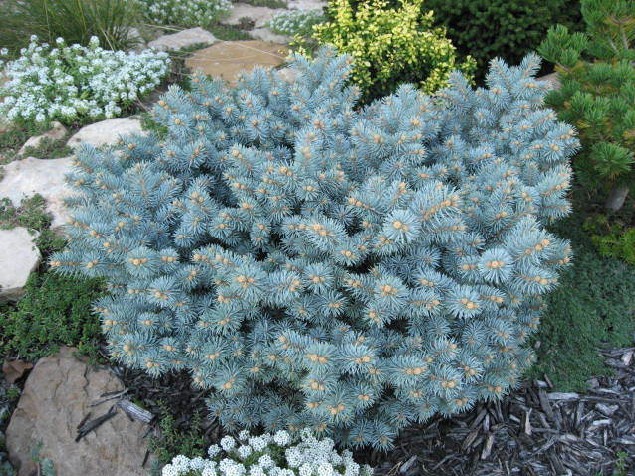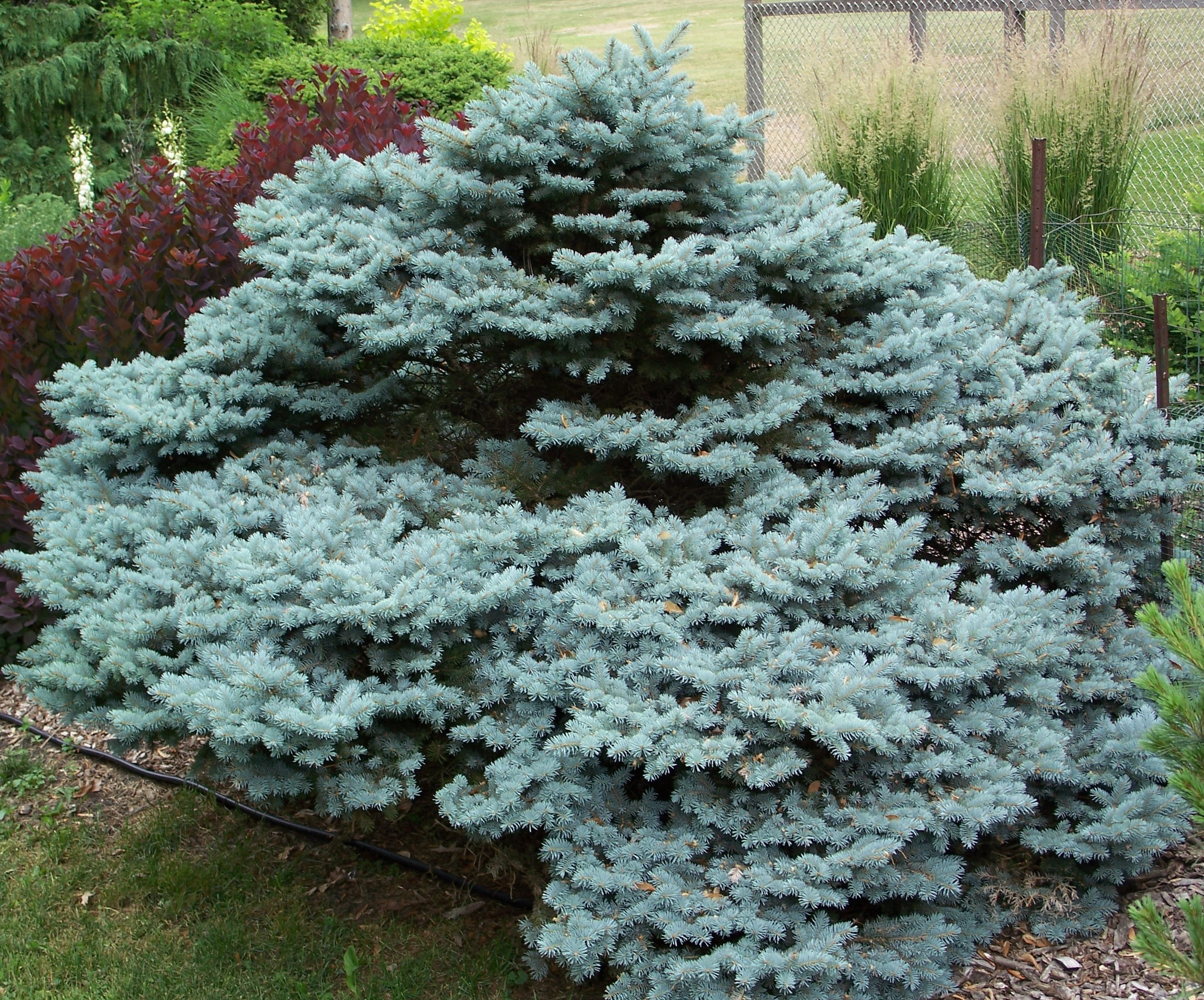Picea pungens 'Globosa' is possibly the best known and most popular of the dwarf Colorado blue spruces. Its branching is short and dense and its needles are sickle shaped with stunning silvery blue color. Many similar compact dwarf, globose clones exist. In fact 'Globosa' is virtually indistinguishable from Picea pungens 'Montgomery.' To maintain the desired globose or spreading habit, prune out any upright or vigorous shoots.
After 10 years of growth, a mature specimen will measure 2 to 2.5 feet (60 - 70 cm) tall and 2 to 3 feet (60 - 90 cm) wide, an annual growth rate of 2 to 3 inches (5 - 7.5 cm)
This cultivar originated as a seedling selected in 1937 by Anthony Kluys of Boskoop, The Netherlands and formally described in 1949 by P. den Ouden in his text, Coniferen, Ephedra en Ginkgo.

